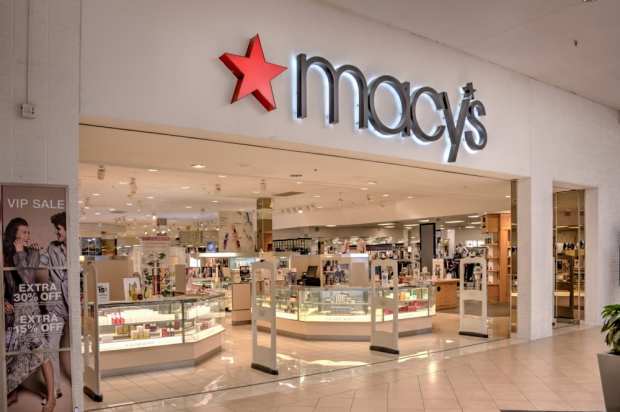Can Real Estate Provide A Lifeline for Physical Retail?

Might Macy’s be a better landlord than retailer? That thought seems to be floating around in recent days, as investors took kindly to the chain’s apparent plan to build what CNBC called “an office tower on top its flagship New York store.”
Indeed, after news of that plan broke, shares of Macy’s increased 2 percent, according to reports. “Department stores across the U.S. have been hurt as shoppers make more purchases online, forcing retailers to think of ways to either downsize their footprints or repurpose their stores. Macy’s has one of the country’s largest fleet of stores, and has been vocal about its desire to trim square footage at some of its stores,” the report observed.
That said, there is as yet no indication that Macy’s has applied for permission from New York City authorities for such a project.
Macy’s Woes
The year got off to a bumpy start for the retail chain, as holiday sales slumped when they were supposed to soar. “The holiday season began strong — particularly during Black Friday and the following cyber week — but it weakened during the mid-December period, and did not return to expected patterns until the week of Christmas,” Macy’s Chairman and CEO Jeff Gennette said in a statement.
At the time, Gennette also announced the retailer’s multi-pronged plan for getting back on track: opening more Backstage locations; bulking up high-value areas like fine apparel, clothes and jewelry; adding new in-store technology investments and launching more pop-up shops. In February, Macy’s noted plans to double the number of pop-up shops within its stores.
Recently, the chain launched a new themed shop that will change themes, looks and product offerings every six to eight weeks. Story At Macy’s debuted in 36 of its stores earlier in April, with the shops boasting 400 unique items on display. The retailer wants Story At Macy’s to be an “evergreen gifting destination,” with current products including a bicycle repair kit in a bright red metallic box, a sneaker cleaning kit, Levi’s denim jackets kids can personalize, Crayola socks, reusable straws and individual palettes by MAC, which had previously only been sold to professionals.
Mall Plans
Macy’s is certainly not the only retail operation with new ideas about how to deal with its real estate as physical retail keeps losing its luster and more consumers shop online. Malls are finding new life as offices for tech companies, as developers are repurposing space formerly held by retail tenants into workplaces with high-end amenities for firms like Google. In Los Angeles, for example, part of the Westside Pavilion is set to be redeveloped into a 584,000-square-foot office for the tech company in a project that is slated to finish in 2022.
Offices in malls don’t have to be leased to only one company: Co-working could also be a space-filler for waning malls and other retail spaces. Those kinds of spaces are set for 25 percent growth through 2023 at retail properties, per Jones Lang LaSalle data. And in the next five years, those kinds of uses are set to fill approximately 3.4 million square feet of retail space.
But malls have also found other use cases for space. To bring in more customers to their properties, they have leased spaces to gyms and immersive destinations. Santa Fe, New Mexico-based company Meow Wolf was planning to lease 50,000 square feet to an “immersive bazaar” of shops, restaurants and event space scheduled to open this fall called AREA15.
Retail Trends
According to Coresight Research, U.S. merchants this year already have said they will shutter nearly 6,000 physical retail locations — that’s more than the nearly 5,900 closings for the entire year of 2018. A longer-term retail outlook, this one from investment firm UBS, said that an estimated 75,000 brick-and-mortar stores are likely to shut down by 2026.
UBS reported the average U.S. household spent $5,200 online last year, an increase of nearly 50 percent from five years earlier. And the report added that online shopping is expected to make up 25 percent of retail sales, with around 16 percent of overall sales made online.
It’s often pointed out that most retail spending still takes place in physical merchant locations, and that’s true — but as various observers have pointed out, the traditional brick-and-mortar business model is well on its way to apparent extinction.
In a PYMNTS column earlier this year about the death of the physical store model, Karen Webster went beyond the demise of Sears to explore how 2018 financial reports for those stores and other factors foreshadowed coming trouble for that model. As she wrote, anyone who wants to operate a physical store must convince consumers it’s worth their time to go there to shop — but that won’t be a slam-dunk for traditional retailers. That’s because over the last half decade, customers have been trained to think that walking into a store isn’t nearly as satisfying or productive an experience as shopping online.
That may be so, but as Macy’s and malls are showing, there may be a better use for their space than traditional retail.
